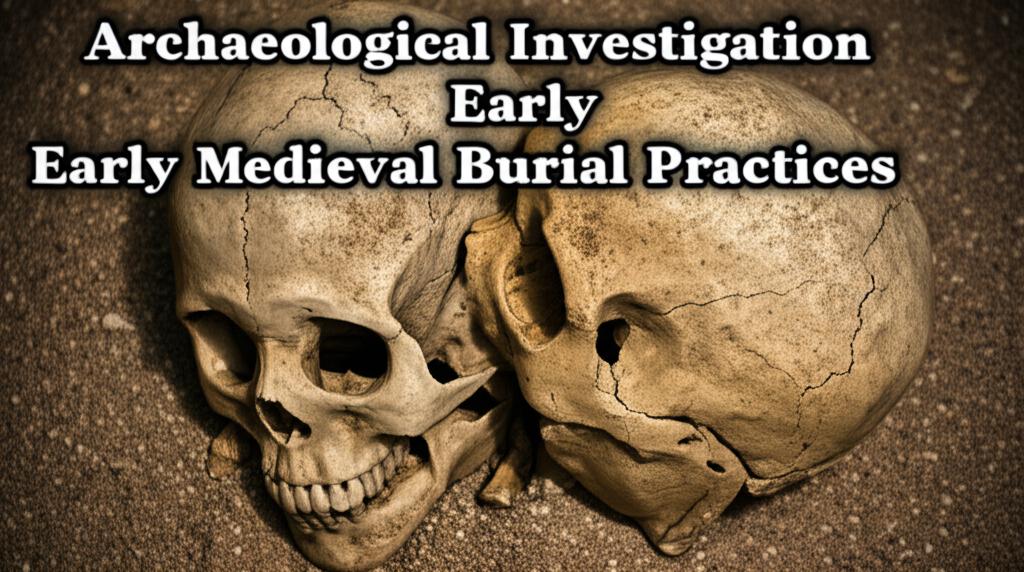Archaeological investigations continue to shed new light on the diverse and complex burial practices of early medieval Europe (roughly 5th to 11th centuries CE). Far from being uniform, funerary rituals varied significantly across regions and changed over time, reflecting evolving social structures, religious beliefs, and cultural interactions.
Recent studies emphasize the coexistence and blending of different traditions. While the spread of Christianity gradually led to more standardized practices like west-east oriented inhumation in consecrated cemeteries without grave goods, the transition was slow and multi-faceted. In many areas, particularly in the earlier centuries of this period, pre-Christian customs persisted or merged with new Christian ideologies. This is evident in the continued inclusion of grave goods – items buried with the deceased, such as weapons, tools, jewelry, and pottery – in many Christian burials, albeit often declining in quantity or changing in nature over time.
Archaeologists are increasingly employing scientific techniques to extract more information from burial sites. Osteological analysis of skeletal remains provides data on demographics, health, diet, and patterns of physical activity or violence within past populations. Ancient DNA (aDNA) analysis is revolutionizing the field, allowing researchers to trace genetic ancestry, kinship relations between individuals buried together, and patterns of migration. Isotope analysis (studying elements like strontium, oxygen, carbon, and nitrogen in teeth and bones) helps reconstruct individual mobility and dietary habits, revealing whether people grew up locally or migrated from elsewhere, and what types of food they consumed.
Grave location and structure also offer crucial insights. Burials occurred in various contexts: isolated graves, small family plots, large organized cemeteries associated with settlements or churches, and sometimes within reused prehistoric monuments like barrows. The construction of graves ranged from simple pits to elaborate stone-lined cists or wooden chambers. The presence or absence of coffins, shrouds (often detected through pins or textile remnants), or burial mounds can indicate social status or specific cultural affiliations.
Some recent investigations focus on 'deviant burials' – graves that differ significantly from the norm, such as prone burials (face down), decapitations, or burials outside designated cemeteries. Interpretations vary, suggesting possibilities like social exclusion, punishment, specific beliefs about preventing the dead from returning, or different cultural practices altogether.
The study of grave goods remains central. Their type, quantity, and placement can signify the deceased's social identity, status, gender, age, or occupation. For example, warrior burials containing swords, shields, and spears are common in some early medieval cultures, while other graves might feature elaborate brooches, beads, weaving tools, or feasting equipment. The analysis extends beyond mere identification; researchers examine the craftsmanship, origins (local or imported), and symbolism of these objects.
Ongoing excavations and the re-analysis of older finds using modern techniques continuously refine our understanding. They reveal that early medieval societies were dynamic, with burial practices reflecting a complex interplay of inherited traditions, religious conversion, social hierarchies, and individual or community identities. The archaeological record of death provides a unique window into the lives and worldviews of people during this transformative period in European history.

